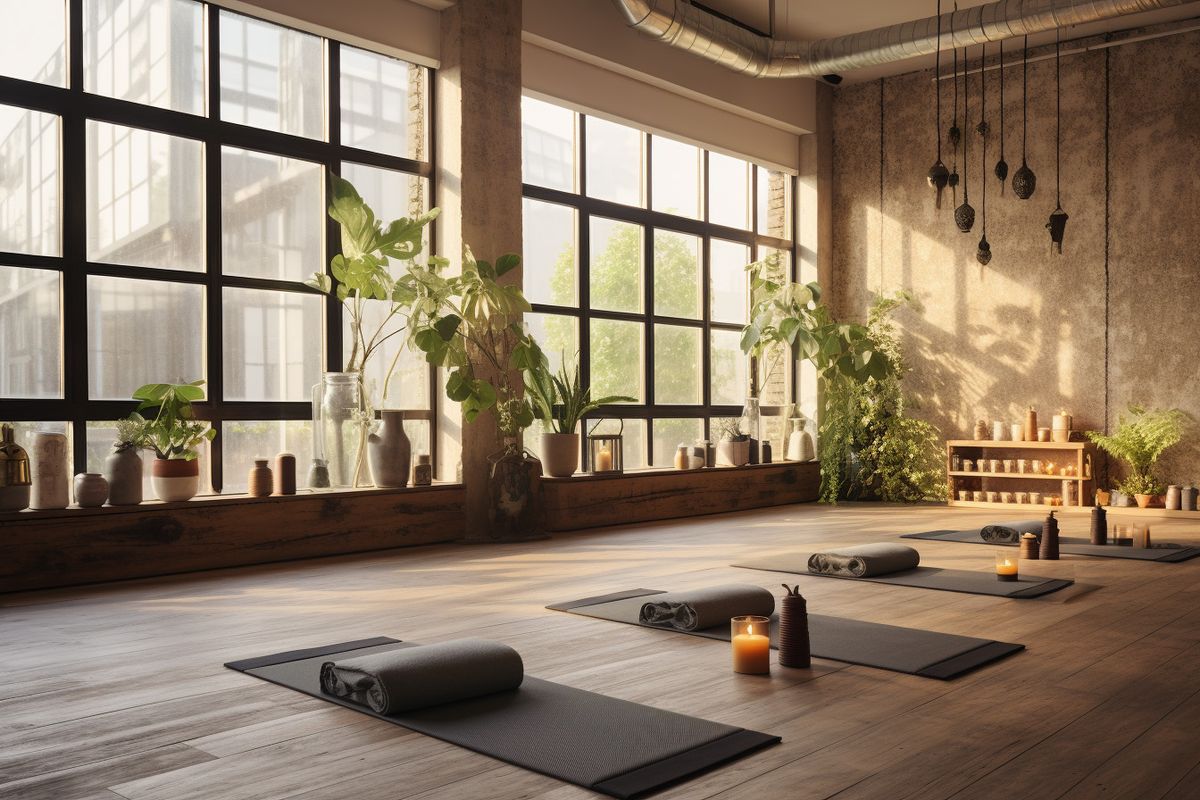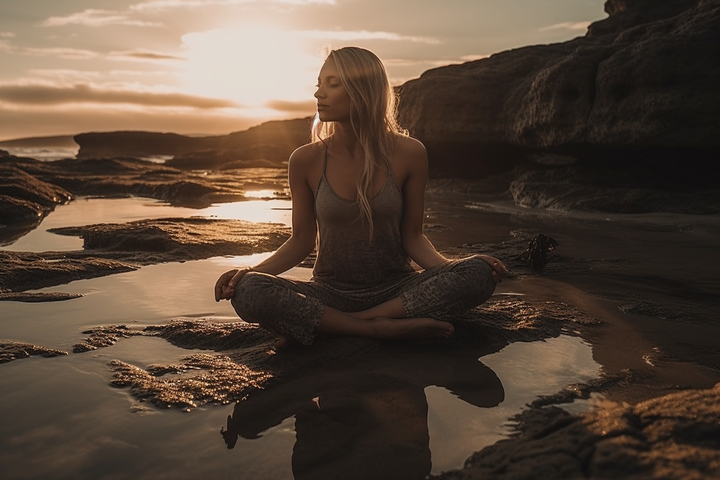Ultimate Guide to Supported Legs Up the Wall Pose
Whether you're new to yoga or a seasoned practitioner, Supported Legs Up the Wall offers something for everyone. It serves as a potent reminder that sometimes the simplest poses are the most powerful.

Introduction: Why Supported Legs Up the Wall Pose Matters
Supported Legs Up the Wall Pose, or "Salamba Viparita Karani" in Sanskrit, offers a unique blend of relaxation and restoration.
In this guide, we'll delve into the history, benefits, and anatomy of this rejuvenating pose while providing a step-by-step tutorial to help you master it.
Salamba Viparita Karani: A Supported Take on the Classic Pose
What Makes it "Supported"
In the context of yoga, "Salamba" signifies a pose that uses props for support, which can make the asana more accessible or deepen the practitioner's experience.
Salamba Viparita Karani incorporates props like bolsters, blankets, or blocks under the hips and lower back, providing extra elevation and alignment. This not only enhances comfort but can also intensify the therapeutic benefits of the pose.
Evolving from the Classic Viparita Karani
The classic Viparita Karani involves simply lifting your legs up against a wall without any additional support. The focus is on inversion and gravity's effect on circulation.
However, the supported version, Salamba Viparita Karani, builds upon this foundation by introducing props to improve alignment and promote relaxation.
Who Benefits From the Supported Version
While the classic pose offers significant benefits, the supported version is particularly beneficial for those who may find it challenging to maintain the pose for extended periods due to discomfort or muscle tension.
Beginners, elderly practitioners, or individuals with lower back issues may find Salamba Viparita Karani to be a more accessible and comfortable option.
How Props Enhance the Pose
Using props like a bolster or blankets provides a gentle lift to the pelvic region, encouraging better circulation and facilitating deeper relaxation.
This subtle elevation can make a significant difference in how the pose feels and its overall benefits. It allows the practitioner to focus more on their breath and less on trying to maintain an uncomfortable position.
Physical Benefits: Why You Should Try Supported Legs Up the Wall
Improved Circulation and Venous Return
One of the most touted benefits of this pose is its impact on circulation. The inverted nature of Salamba Viparita Karani allows gravity to aid blood flow from the legs back to the heart.
This can be particularly beneficial for people who suffer from varicose veins or have occupations that require prolonged periods of standing or sitting.
Stress Reduction and Nervous System Calming
The use of props in the supported version makes it easier to maintain the position for extended periods, encouraging a state of deep relaxation.
The pose is also thought to stimulate the parasympathetic nervous system, which helps to reduce stress and induce calmness.
Relieves Lower Back Pain
The supported elevation of the hips relieves the spine of the pressure of gravity, often resulting in a soothing effect on lower back pain.
The props allow for better alignment of the spine, which can be therapeutic for those suffering from chronic or acute back issues.
Muscle Recovery and Reduced Swelling
Athletes or those involved in high-intensity activities may find the pose beneficial for muscle recovery.
Elevating the legs helps to reduce lactic acid build-up, thereby speeding up the recovery process. The pose is also useful for reducing swelling in the legs and feet.
Enhanced Respiratory Function
The angle of the body in Salamba Viparita Karani can aid in more effective diaphragmatic breathing, encouraging increased oxygen uptake and improved respiratory function.
Step-By-Step Instructions: Mastering the Supported Legs Up the Wall Pose
Step 1: Choose the Right Spot
Find a space near a wall where you can stretch out comfortably.
Step 2: Gather Your Props
Assemble a bolster, blankets, or blocks near the wall. You may also want a cushion for your head.
Step 3: Setting the Props
Place the bolster or folded blankets about 6–12 inches away from the wall, parallel to it.
Step 4: Start with a Reclined Position
Sit down beside your bolster, positioning your hip against the wall.
Step 5: Pivot
Carefully pivot your legs up the wall while reclining your torso back onto the floor. Your lower back and hips should be elevated by the bolster or blankets.
Step 6: Find the Right Distance
Adjust your distance from the wall so that your legs are comfortable. The closer the hips are to the wall, the more intense the stretch.
Step 7: Align Your Body
Make sure your body is in a straight line, from the crown of your head to your hips. Your legs should be parallel and slightly apart, feet relaxed.
Step 8: Place Your Arms
Position your arms in a comfortable spot alongside your body or spread them out to form a T shape for a chest-opening effect.
Step 9: Focus on Breathing
Close your eyes and focus on your breath. Take deep, calming breaths as you hold the pose for 5–15 minutes, depending on your comfort level.
Step 10: Exiting the Pose
To exit, bend your knees and gently roll to one side, using your arms for support. Sit up slowly, taking a moment to acclimate before standing.
Common Mistakes to Avoid: Perfecting Your Pose
Step 1: Ignoring the Wall Surface
Choosing a clean, even wall surface is crucial for comfort and safety. Ensure the wall you pick is free from obstructions.
Step 2: Overarching the Lower Back
While it's tempting to push your hips too far forward to get closer to the wall, this can cause an uncomfortable arch in the lower back. Make sure your lower back remains flat or slightly curved naturally, supported by your props.
Step 3: Straining the Legs
Keeping your legs rigid and tensed defeats the purpose of the pose, which is relaxation and rejuvenation. Your legs should be relaxed, and your feet should hang naturally. If you feel strain, consider moving your hips slightly away from the wall.
Step 4: Poor Upper Body Positioning
Some people hold their arms in a way that creates tension in the shoulders or neck. Your arms should be placed comfortably alongside your body or extended outwards to facilitate relaxation and open the chest.
Complementary Supported Poses: Enhance Your Practice
Supported Child's Pose (Salamba Balasana)
This pose is excellent for gentle spinal elongation and deep relaxation. It complements the invigorating effects of Salamba Viparita Karani by grounding your energy and focusing on breathwork.
Supported Bridge Pose (Salamba Setu Bandhasana)
An ideal pose for opening up the chest and strengthening the lower back. Practicing this pose before or after Salamba Viparita Karani can help in effectively stretching and relaxing the back muscles.
Supported Pigeon Pose (Salamba Eka Pada Rajakapotasana)
This hip-opening pose complements the leg elevation in Salamba Viparita Karani by focusing on hip flexibility and release. It's particularly useful for those who have tight hips and want to improve their range of motion.
Supported Fish Pose (Salamba Matsyasana)
This pose targets the upper back and neck, offering a counter-stretch to the relaxed positioning of the back in Supported Legs Up the Wall. It’s excellent for those looking to improve posture and relieve tension in the upper body.
Supported Supta Baddha Konasana
A fantastic pose for opening up the hips and encouraging relaxation. This asana can be performed with props like bolsters and blocks to provide a comfortable position that allows you to focus on breathing and relaxation.
Revolved Abdomen Pose (Jathara Parivartanasana) with Props
The twisting nature of this pose helps to relieve spinal tension, a perfect counterbalance to the static hold of Salamba Viparita Karani. Just like Salamba Viparita Karani, Jathara Parivartanasana encourages mindfulness and deep breathing.
Supported Savasana
Perhaps the quintessential relaxation pose, a supported Savasana can provide the ultimate relaxation and inward focus to round out a session that includes Supported Legs Up the Wall. Pillows or bolsters can be placed under the knees and lower back for added comfort.
Conclusion: Integrating Supported Legs Up the Wall into Your Practice
Whether you're new to yoga or a seasoned practitioner, Supported Legs Up the Wall offers something for everyone. It serves as a potent reminder that sometimes the simplest poses are the most powerful.
By regularly integrating this restorative pose into your practice, you can move closer to achieving a balanced body, a calm mind, and a revitalized spirit.



Comments ()